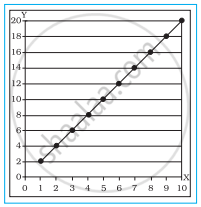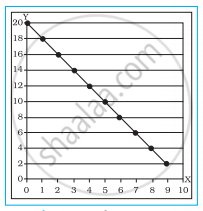Advertisements
Advertisements
Question
Write a detailed note on the degree of correlation.
Solution
Through the coefficient of correlation, we can measure the degree or extent of the correlation between the two variables. On the basis of the coefficient of correlation, we can also determine whether the correlation is positive or negative and also its degree or extent.
- Perfect correlation: If two variables change in the same direction and in the same proportion, the correlation between the two is perfect positive. According to Karl Pearson, the coefficient of correlation, in this case, is +1. On the other hand, if the variables change in the opposite direction and in the same proportion, the correlation is perfect negative. Its coefficient of correlation is -1. In practice, we rarely come across these types of correlations.
- Absence of correlation: If two series of two variables exhibit no relations between them or change in a variable does not lead to a change in the other variable, then we can firmly say that there is no correlation or absurd correlation between the two variables. In such a case the coefficient of correlation is 0.
- Limited degrees of correlation: If two variables are not perfectly correlated or are there a perfect absence of correlation, then we term the correlation as Limited correlation. It may be positive, negative, or zero but lies with the limits ± 1.
High degree, moderate degree, or low degree are the three categories of this kind of correlation. The following table reveals the effect (or degree) of coefficient or correlation.
|
Perfect Positive Correlation |
Perfect Negative Correlation |
APPEARS IN
RELATED QUESTIONS
The measure of central tendency always coinciding with the hump of any distribution is:
A scatter plot represents negative correlation if the plotted values run from:
What is perfect correlation?
What is the maximum extent of correlation?
Draw scatter plots showing different types of perfect correlations.


